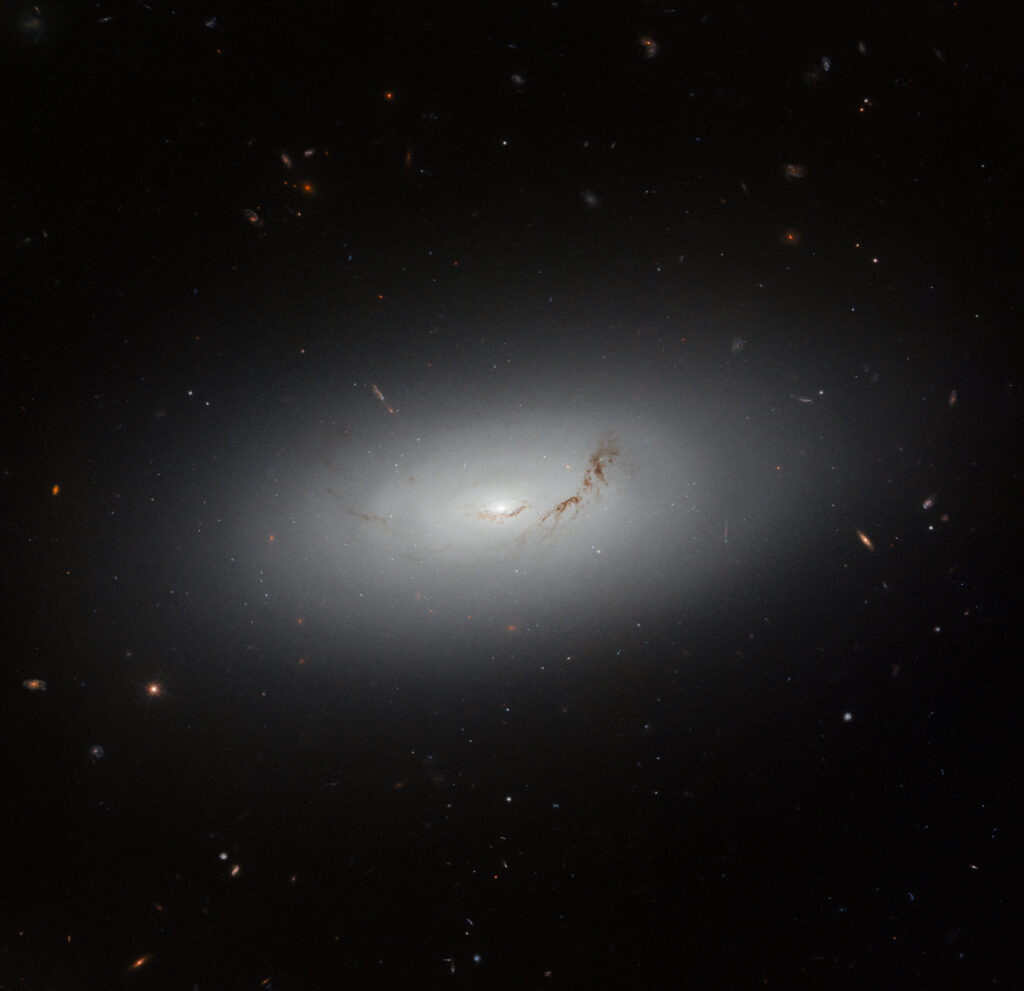The Hubble mission support team has published a new image of the space telescope. This time it photographed the galaxy NGC 3156.

Galaxy NGC 3156 is located at a distance of 73 million light-years from Earth in the direction of the constellation Sextans. It got its name in honor of the navigation instrument used in the past to determine the height of the Sun and other celestial bodies above the horizon to determine geographical coordinates.
NGC 3156 is classified as a lenticular galaxy. Such objects represent a transitional stage between spiral and elliptical galaxies. They have the shape of a disk, a rather marked core and a halo, just like our Milky Way. At the same time, the spiral structure is no longer visible in them. The NGC 3156 image does not show the usual spiral arms — only a few faint gray concentric ovals. In addition, two threads of dark red dust intersect the disk of the galaxy near the center.
Another important difference lies in the composition of the stellar population. As a rule, lenticular galaxies have already used up most of their gas reserves. Therefore, the rate of star formation in them is lowered. Lenticular galaxies are mostly inhabited by old luminaries, which makes them related to elliptical galaxies. Therefore, such structures can be figuratively called “space pensioners”.
However, in the latter aspect, NGC 3156 is slightly different from typical lenticular galaxies. The results of spectral analysis suggest that a billion years ago, it experienced an outbreak of star formation. So NGC 3156 still has young stars. But, at the same time, most of the other luminaries are very old. According to astronomers, the average age of the stellar population of NGC 3156 is about 8 billion years.
Earlier we wrote about how Hubble took a spectacular picture of a scattering of gold stars.
According to https://esahubble.org
Follow us on Twitter to get the most interesting space news in time
https://twitter.com/ust_magazine
